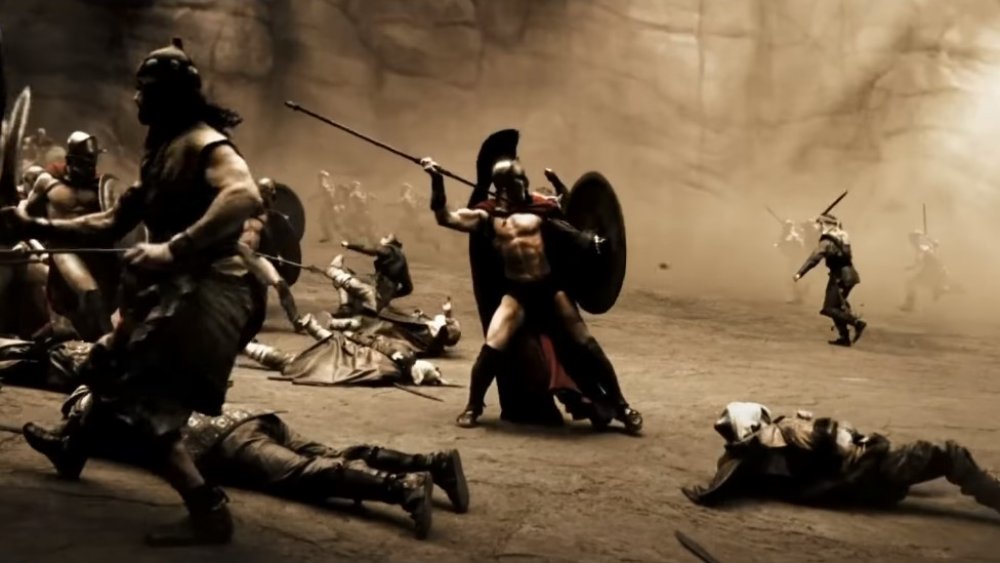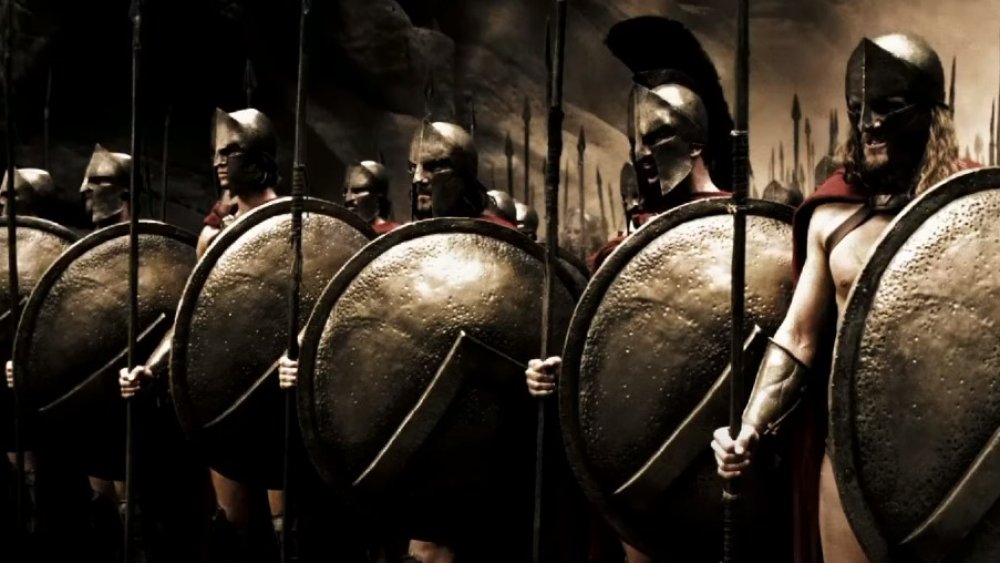What 300 Doesn't Tell You About The Battle Of Thermopylae
It's been nearly 15 years since an army of 300 Spartan soldiers Snyder-cut their way through a Persian invasion force and into the hearts and memes of America, helpfully reminding a generation of moviegoers that this is, in point of fact, Sparta. Public opinion was divided: on the one hand, you had folks like former Encyclopedia Britannica editor-in-chief Robert McHenry who, in a review of 300, called the film "almost ineffably silly" and "not quite as repellent as those commercials in which people talking about their financial management problems are turned into animated sketches of themselves, but nearly so." On the other hand, you had your cousin who was drinking a lot of Mountain Dew Code Red at the time, who stated with some certainty that the motion picture was "badass" before helpfully informing you that it was, like, totally based on a true story.
The truth lies somewhere in the middle. Yes, 300 is based-ish on real events, but it portrays those events through a deeply goofy lens. As it turns out, the Spartans, the real Spartans, weren't what you'd call "TV ready."
Tonight, we dine in clothes
First off, there's the issue of the dress code. Think back hard enough and it's possible that you'll recall the way that Leonidas' army treated the battle of Thermopylae like muscle beach on Spring Break, using it as an opportunity to show off each soldier's Greek-deli-counter-worth of premium shredded beef. In reality, Spartan soldiers were very reasonably into wearing armor into battle. Frank Miller, the creator of the comic book that 300 was based on, noted in an Entertainment Weekly interview that he ditched the duds intentionally as a creative decision, opting to make his protagonists more visually radical and easily distinguishable from one another. Ironically, the Persian Immortals, depicted in the movie as heavily armored Iranian ninjas, went into the battle without armor and, according to the Ancient History Encyclopedia, got stabbed a lot and died.
Telling one from the other, by the way? It would've been a lot harder during the actual battle, since the whole "300 Spartans versus an army" legend is only true if you turn a blind eye to the roughly 7,000 Greek allies who were fighting behind Leonidas. This inconvenient fact is pointed out by Paul Cartledge, a professor of Greek history, in a review for the Guardian – he also mentions how weird it is that the Spartans call the Greeks "boy-lovers" since Spartan society was built on a heavy foundation of institutionalized pederasty. That's a whole lot of shade to throw, but at least we know they can fight in it.

